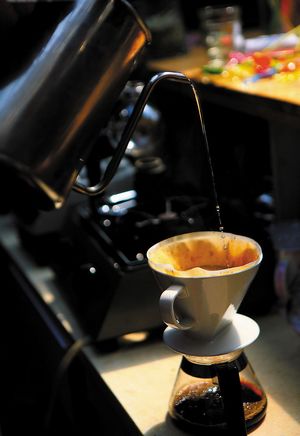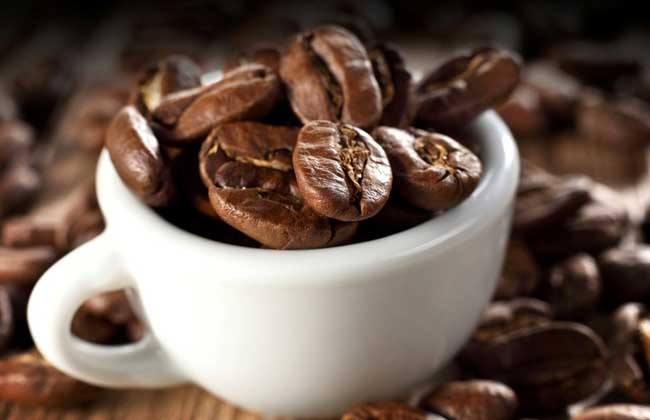Distribution of coffee producing areas in Kenya, introduction of Kenyan coffee
Follow the caf é (Wechat official account vdailycom) and found that Beautiful Cafe opened a small shop of its own.
Kenya's upland washed Arabica beans are one of the best coffee in the world in terms of quality. The coffee industry in Kenya is of good quality and consistent under the strict control of the Kenya Coffee Agency. Kenyan coffee is famous for its strong fruit flavor, with lemon and citrus acid aromas.

Kenya is bordered to the north by Ethiopia, the origin of Arabica coffee trees, but it was not until the beginning of the 20th century that coffee cultivation began. In the 19th century, missionaries introduced Arabica trees from Yemen, but did not plant them in large quantities. It was not until 1893 that coffee was cultivated on a large scale after the introduction of Brazil's ancient bourbon seeds. That is to say, Kenyan coffee is of Brazilian origin. Due to the differences in water, climate and handling, the taste of Kenyan beans is very different from that of Brazilian beans.
Kenyan coffee trees are mainly concentrated on the slopes near Mount Kenya, about 4 to 6500 feet above sea level, which is the best height for coffee beans to develop their flavor, because the mountain temperature is lower, the growth is slower, and the aromatic components of coffee beans are fully developed. the acidity is more obvious and the texture is harder. In addition, Kenya was an early British colony, and the British had established a set of perfect cultivation and quality control system. After the independence of Kenya, the coffee industry has made great strides on the existing basis, and has become the largest foreign exchange earning industry in Kenya.
Kenya beans must have a strict grading system. Coffee beans taken out by washing plants are divided into seven grades according to size, shape and hardness, the highest being AA or AA, followed by AB, PB, C, TT and T. This grading system is similar to Colombia, mainly in terms of particle size and shape, but it does not necessarily have the best flavor.
Coffee producing areas in Kenya:
Coffee from Kenya (Kenya) is mostly grown at an altitude of 1500 Murray 2100 meters and is harvested twice a year. Kenyan coffee is grown by small farmers. Kenyan coffee is produced near the Kenyan Mountains in central Kenya and is sometimes guaranteed in the name of the capital, Nairobi. Kenya AA (Kenya AA) is produced on the 17000-foot hillside of Mount Kenya near Nairobi, the capital of Kenya. Kenya AA is the largest coffee bean in the country, followed by An and B again. Its unique bitterness and wine taste are most praised by people. Located in Kenya below the equator of East Africa, the coffee beans planted are high-quality Arabica seeds. The size of the beans is medium-large, very thick and delicious, and the acidity is moderate.
The characteristics of Kenyan coffee:
People in the coffee industry regard Kenyan coffee as one of its favorite products, with wonderful and satisfying aromas, balanced acidity, well-proportioned granules and excellent fruit flavors.
Kenyan coffee grades are divided into seven grades according to the size of coffee beans and six grades according to taste. The best coffee in Kenya is bean berry coffee (PB), followed by AA++, AA+, AA, AB and so on. The fine coffee is shiny, delicious and slightly alcoholic. "Kenya AA" is particularly well received in terms of taste.
Kenyan coffee has a slightly sour, thick aroma, raw bean particles are small, green to grayish green. Kenya's coffee beans are washed Arabica species, famous for (Kenya Arabica), especially in the United Kingdom, Kenyan coffee surpassed Costa Rican coffee to become one of the most popular coffee.
Flavor: aromatic, full-bodied, with fruit flavor, rich and perfect taste
Suggested baking methods: shallow baking, medium-shallow baking
Important Notice :
前街咖啡 FrontStreet Coffee has moved to new addredd:
FrontStreet Coffee Address: 315,Donghua East Road,GuangZhou
Tel:020 38364473
- Prev

How to brew Kenyan coffee, introduction to the characteristics of Kenyan coffee
How to brew Kenyan coffee [Kenya round beans] 13 grams, cup test baking degree (belongs to 1 burst beans); 93 degrees water temperature (cooling by changing pots, cold water into hot water loss is 2%); powder-to-water ratio is 1: 16.66; after grinding, it is corrected by No. 20 sieve. [water consumption] conversion according to the ratio of gouache: 13g x 16.66mm 216.58g; change to 93 degrees hot water: 216.58 X 0.98( 1-0.02)
- Next

The main varieties of Kenyan coffee, Kenyan Coffee introduction
[product name]: Rwanda bourbon boutique coffee (Rwanda Bourbon Specialty) [quality rating]: AA [roasting degree]: recommended roasting degree city or deep city roasting (City Roast or Full City Roast) [grade]: good [granule]: ★★ full [acidity]: ★★★ micro acid [equilibrium]: ★★★ stable [flavor]: soft,
Related
- Detailed explanation of Jadeite planting Land in Panamanian Jadeite Manor introduction to the grading system of Jadeite competitive bidding, Red bid, Green bid and Rose Summer
- Story of Coffee planting in Brenka region of Costa Rica Stonehenge Manor anaerobic heavy honey treatment of flavor mouth
- What's on the barrel of Blue Mountain Coffee beans?
- Can American coffee also pull flowers? How to use hot American style to pull out a good-looking pattern?
- Can you make a cold extract with coffee beans? What is the right proportion for cold-extracted coffee formula?
- Indonesian PWN Gold Mandrine Coffee Origin Features Flavor How to Chong? Mandolin coffee is American.
- A brief introduction to the flavor characteristics of Brazilian yellow bourbon coffee beans
- What is the effect of different water quality on the flavor of cold-extracted coffee? What kind of water is best for brewing coffee?
- Why do you think of Rose Summer whenever you mention Panamanian coffee?
- Introduction to the characteristics of authentic blue mountain coffee bean producing areas? What is the CIB Coffee Authority in Jamaica?

